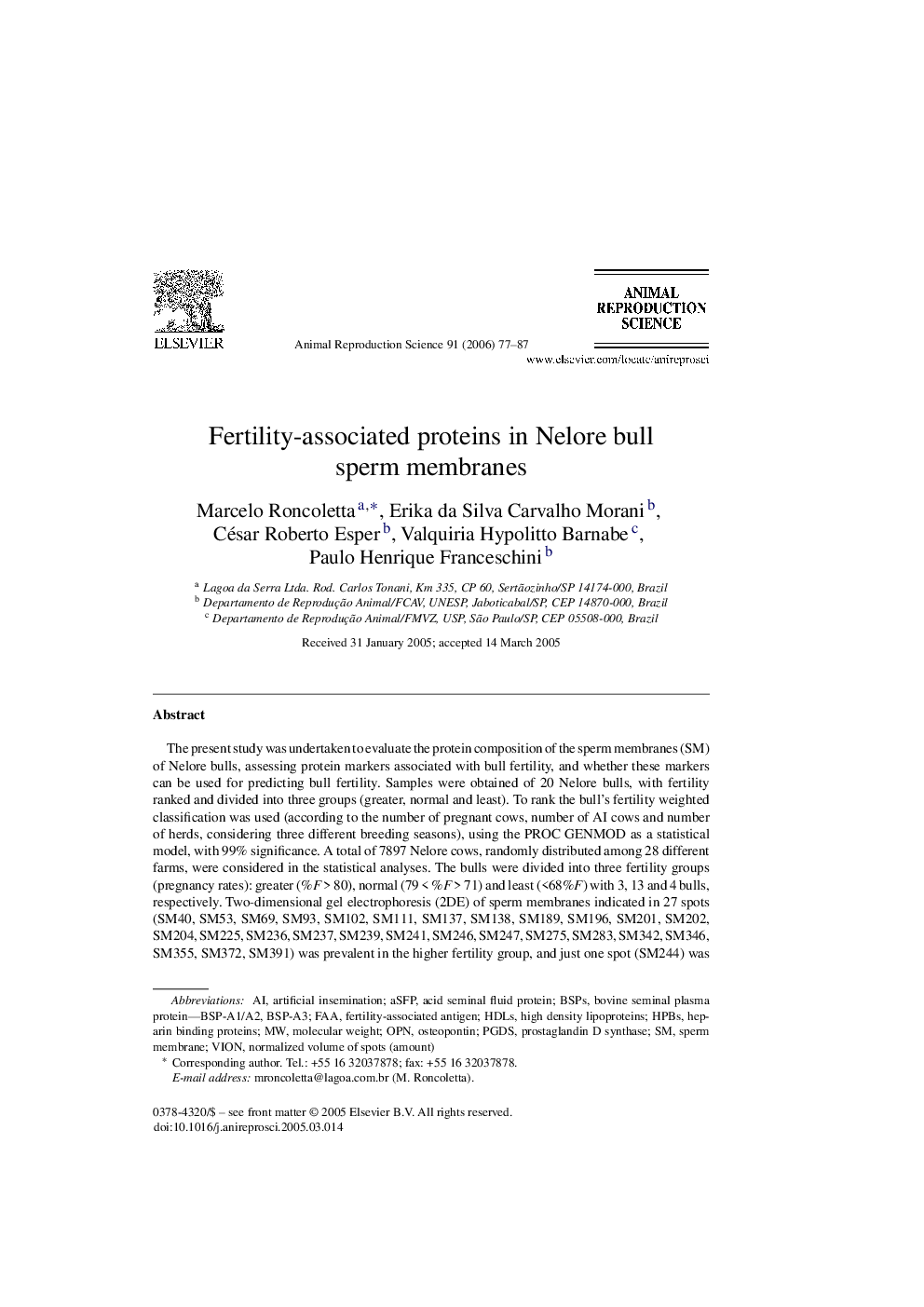| Article ID | Journal | Published Year | Pages | File Type |
|---|---|---|---|---|
| 2075076 | Animal Reproduction Science | 2006 | 11 Pages |
The present study was undertaken to evaluate the protein composition of the sperm membranes (SM) of Nelore bulls, assessing protein markers associated with bull fertility, and whether these markers can be used for predicting bull fertility. Samples were obtained of 20 Nelore bulls, with fertility ranked and divided into three groups (greater, normal and least). To rank the bull's fertility weighted classification was used (according to the number of pregnant cows, number of AI cows and number of herds, considering three different breeding seasons), using the PROC GENMOD as a statistical model, with 99% significance. A total of 7897 Nelore cows, randomly distributed among 28 different farms, were considered in the statistical analyses. The bulls were divided into three fertility groups (pregnancy rates): greater (%F > 80), normal (79 < %F > 71) and least (<68%F) with 3, 13 and 4 bulls, respectively. Two-dimensional gel electrophoresis (2DE) of sperm membranes indicated in 27 spots (SM40, SM53, SM69, SM93, SM102, SM111, SM137, SM138, SM189, SM196, SM201, SM202, SM204, SM225, SM236, SM237, SM239, SM241, SM246, SM247, SM275, SM283, SM342, SM346, SM355, SM372, SM391) was prevalent in the higher fertility group, and just one spot (SM244) was prevalent in the lower fertility group. Spots SM244 and SM239 had their identification defined by PMF/MALDI-MS, as BSP-A3 and aSFP, respectively. Both these proteins showed a great potential for predicting bull's fertility. The amount of aSFP was 8.5 times greater in the sperm membrane protein profile of the higher fertility groups of Nelore bulls. Besides that, the BSP-A3 was 2.5 times greater in the lower fertility group. For the other spots potentially associated with fertility not yet identified, additional tests will be necessary, but it is clear that the 2D electrophoresis of the sperm membrane can be used for a new approach to predict Nelore bull fertility.
